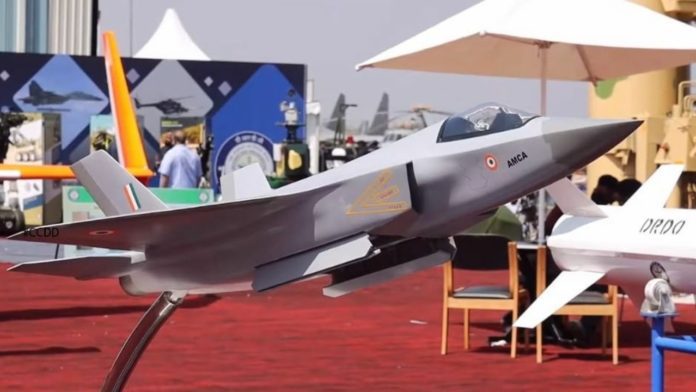SOURCE: RAUNAK KUNDE / NEWS BEAT / IDRW.ORG

The ambitious Advanced Medium Combat Aircraft (AMCA) program is poised to take off following a landmark agreement between India and France to jointly co-develop a new engine for India’s fifth-generation AMCA fighter jet. The breakthrough might soon come when Cabinet Committee on Security (CCS) grants clearance for a ?15,000 crore investment in the AMCA program, encompassing prototype development and flight testing.
The engine front had been a key obstacle, and the Ministry of Defense (MoD) was eager to resolve the engine deal before the AMCA program could progress further. With the engine collaboration in sight, the chances of the AMCA receiving CCS clearances are expected to align with the final agreement for engine development, potentially later this year or early next year.
The AMCA MkI variant will be initially powered by American GE F414 engines, generating 98kN class of thrust. However, this will be limited to prototypes and the first two squadrons. The next five squadrons of the AMCA will be equipped with the much-anticipated Indo-French engines, which are likely to find their way into the AMCA MkI variant as well.
The engine collaboration between India and France will have far-reaching implications, extending beyond the AMCA program. The same Indo-French engine will also power the production variant of the Twin Engine Deck-Based Fighter (TEDBF), slated to enter production around 2032-33. The TEDBF will replace the ageing Russian-made Mig-29K and complement the 26 Rafale M aircraft that the Indian Navy is set to acquire as an interim solution.
The joint investment in the development of the new engine is expected to amount to nearly $5 billion. Under the agreement, both India and France will hold Joint Intellectual Property Rights (IPR) for the engine, ensuring shared benefits from the collaboration. Importantly, the engine will come with no export restrictions for India, allowing the country to potentially export the engine alongside the AMCA or TEDBF, further strengthening India’s position in the global aerospace market.
As part of the initial commitment, both companies will commit to producing a minimum of 400 engines. However, in the long term, India is projected to manufacture approximately 1500 engines over the next 20-30 years to power both manned and unmanned combat aircraft programs. This indicates the strategic importance of engine collaboration in bolstering India’s self-reliance in defence manufacturing and advancing its capabilities in aeronautics.
NOTE : Article cannot be reproduced without written permission of idrw.org in any form even for YouTube Videos to avoid Copy right strikes